Like me, you are probably feeling a bit depressed at the thought of your garden’s painstakingly planted scenes deteriorating over the next months (as they do every autumn). Yes, of course, you can plant some spring-blooming bulbs, but you will have to wait a good six months (and endure a lot of awful weather) to see them!
Please, don’t despair just yet. There are bulbs that bloom in the fall. Asters, mums, and fall foliage—we’re used to that (especially in New England). But these are real, honest-to-goodness fall-blooming bulbs that will flower after everything else in your garden is either dead, turning colors, or producing berries (not that those last two tricks are anything to dismiss out of hand). Autumn flowering bulbs are a key addition to keeping a garden that is beautiful in all seasons.
A few hours of work planting these beauties, and next autumn, you will be pleasantly surprised to see them poking their brand new heads up through the detritus of your summer garden.
Plant these earlier than you would the spring bloomers. They need more time to settle and grow into their new homes; you may even get flowers your first autumn.
And don’t forget the cardinal rule of bulb-planting: plant more—lots more—than you think you need. No one ever complained about having too many bulbs.
Fall planting ideas: 7 Autumn Flowering Bulbs and Companion Plants
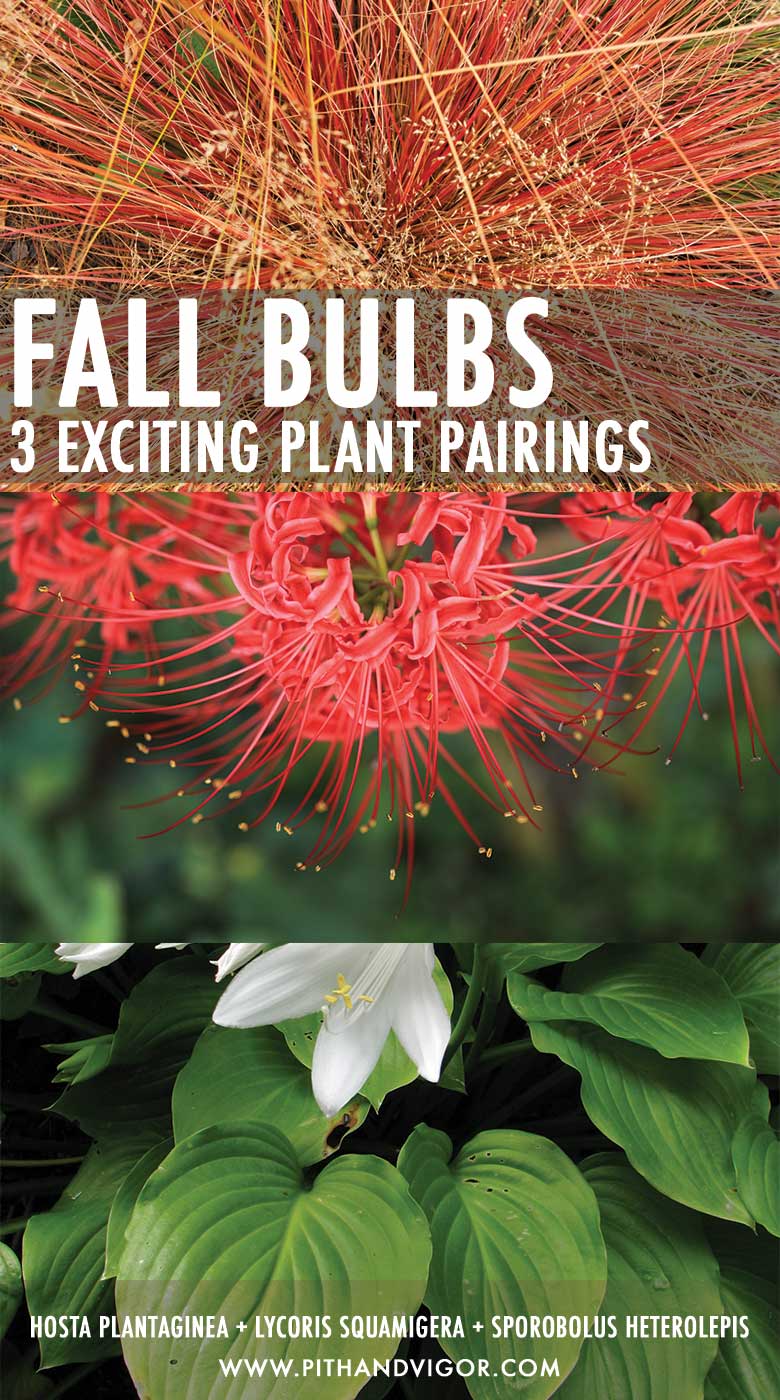
1) Fall Blooming Bulb: Lycoris squamigera
A member of the amaryllis family and a disappointment to our deer and rodent gardening companions, Lycoris squamigera is a drought and heat-tolerant, low-maintenance bulb with the risqué nickname “naked ladies.”
Hailing from Japan, Lycoris squamigera is also sometimes called the “surprise“ or “magic lily,” because its foliage appears in spring and dies back in summer. But to my mind, the most apt common name is “resurrection lily,” as it will revive both itself and your fading garden one last time before winter sets in.
When choosing a site for your Lycoris bulbs, keep in mind that the foliage arrives in spring and quickly dies back, so choose companion plants that will disguise or distract from the unsightly fading foliage.
In the sun, plant the bulbs behind or between low-growing, clumping ornamental grasses, so the flowering stalks appear to float above a grassy cushion.
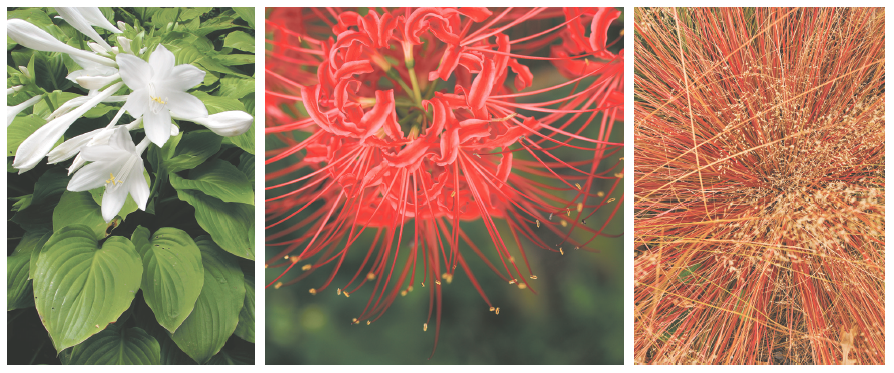
Sporobolus heterolepis (Prairie dropseed) is a good companion plant choice with tall, open, pinkish-brown flower panicles on slender stems. Or try Eragrostis spectabilis (purple love grass), which has shorter pinkish/purple flowers that form a misty cloud. For partial shade, a logical choice is fragrant Hosta plantaginea.
Blooming from August to September, lycoris rises on bare stalks 18–24 inches, with each bulb bearing four to seven funnel-shaped, fragrant rose-pink flowers.
Open woodland gardens, meadows, and wild areas are all appropriate locales for this bulb, which grows well in the sun to partial shade. Lycoris is easy to grow in organically rich, medium moisture well-drained soils. Bulbs should be planted 5–6 inches deep and 6 inches apart in the fall. It will naturalize by bulb offsets.
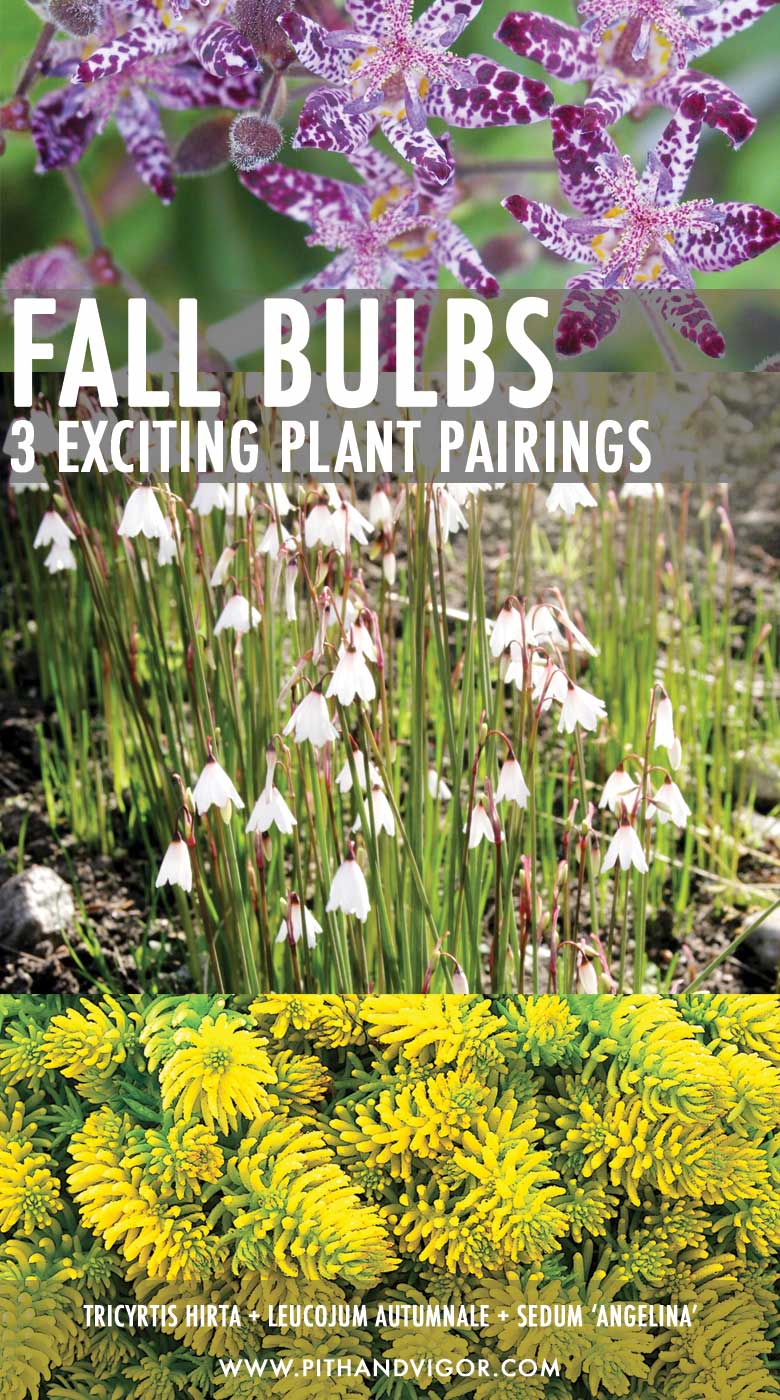
2) Fall Blooming Bulbs: Tricyrtis hirta (Toad Lily) and Leucojum autumnale
Toad lilies (Tricyrtis hirta) are a Mediterranean native and amaryllis family member from the Iberian peninsula. It looks a lot like an orchid and I have planted them in gardens where homeowners want that level of elegance but live in an area where actual orchids could never survive outdoors.
At 4-8 inches tall Leucojum autumnale (syn. acis autumnale) or the “fall snowflake” produces small white bellflowers in late September and October. The cultivar “September snow” is pure white; other forms of the species may be pink-tinged. Leucojum autumnale is a dainty bulb with dark green, grass-like foliage in fall and winter that begs to be planted en masse.
In the sun, the native Aster oblongifolus “October Skies”, with its clear blue blooms, makes an entrancing companion. I recommend planting this perennial over the standard fall mums at every opportunity. Asters are longer lasting, sturdier, easier to grow, and, as I mentioned, TRUE PERENNIALS.
(Some fall mums will perennialize in your garden but will not bloom again in the fall – they will likely bloom in the summer and not provide fall interest past the first year).
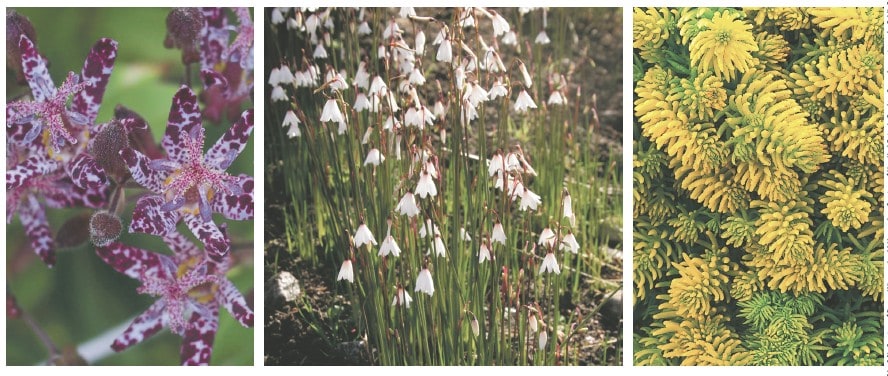
Planting the Leucojum autumnale snowflakes in a groundcover of Sedum “Angelina”, which in fall adds orange tones to its summer gold, makes a knockout mass planting with the asters behind.
In dappled sun, triycyrtis hirta (toad lily) would make a dramatic backdrop.
Plant the fall snowflake in the sun to partial sun and average moisture. It can handle dry soils when dormant.
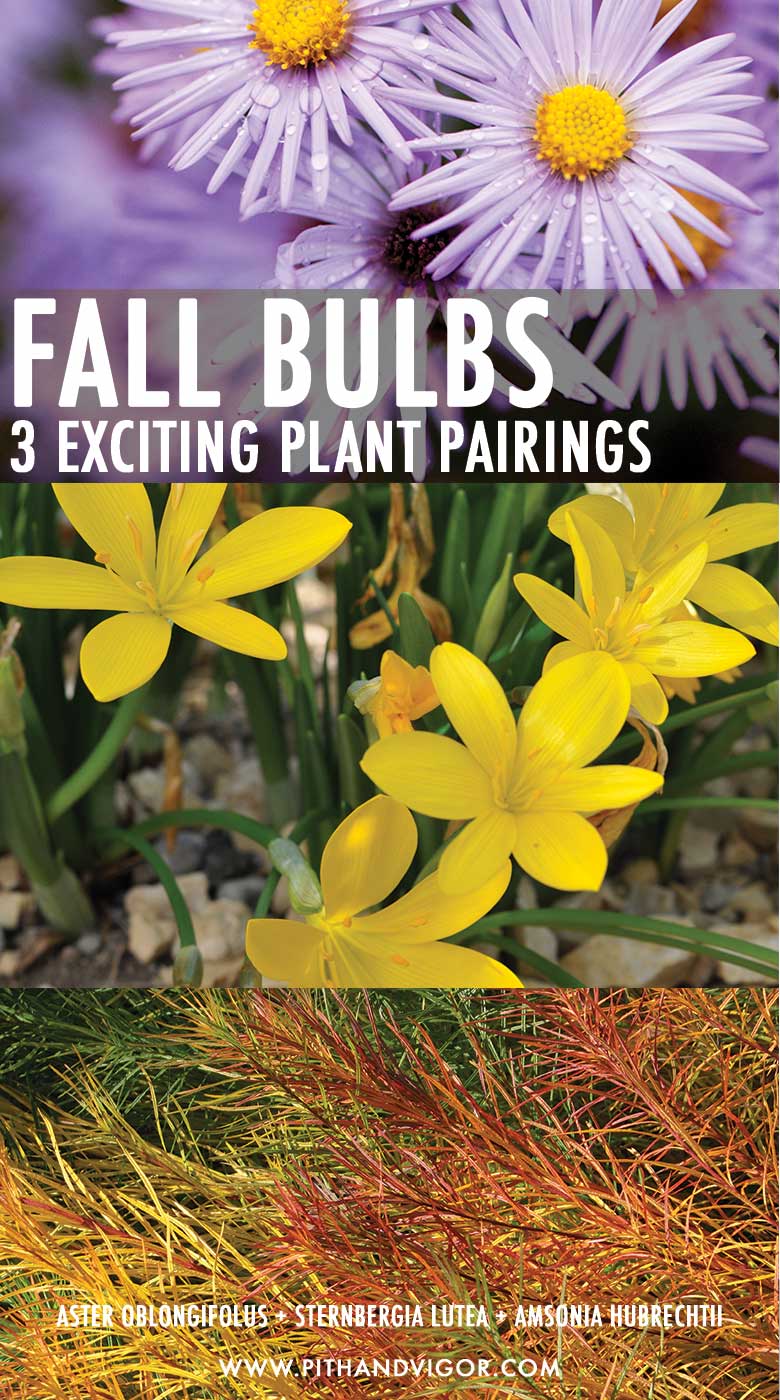
3) Fall Bulb: Sternbergia lutea
There’s nothing funnier than watching a seasonally confused squirrel mistaking a bright yellow Sternbergia lutea for a tasty spring crocus. A member of the amaryllis family, it is resistant to deer, voles, and confused squirrels.
Also known as the “golden crocus” or “winter daffodil,” sternbergia lutea produces single blooms on short (4 inches tall) stalks in September and October, followed by narrow foliage which will persist until spring.
Plant Aster oblongifolus ‘October Skies’, a lovely clear blue native aster, behind your sternbergia for contrast and add a stand of native Amsonia hubrechtii, with its golden fall foliage, for an amazing tableau. All three plants are drought-tolerant and low-care, with similar cultural requirements.
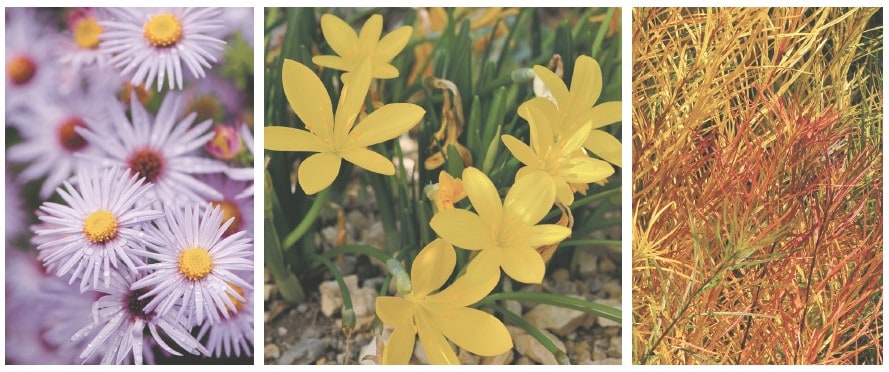
A Mediterranean native, sternbergia lutea prefers hot and sunny conditions, with moderately fertile and very well-drained soil, particularly in winter.
It will not thrive in an irrigated landscape.
It may not survive winter in USDA Zone 6 unless sited in protected locations. Try growing it at the south-facing sunny edges of woodlands.
A loose mulch over in winter (such as evergreen boughs laid on the ground) will help, and a bit of lime will make it even happier. Left alone, the plants form slowly increasing clumps over time, and self-seeding may also occur.
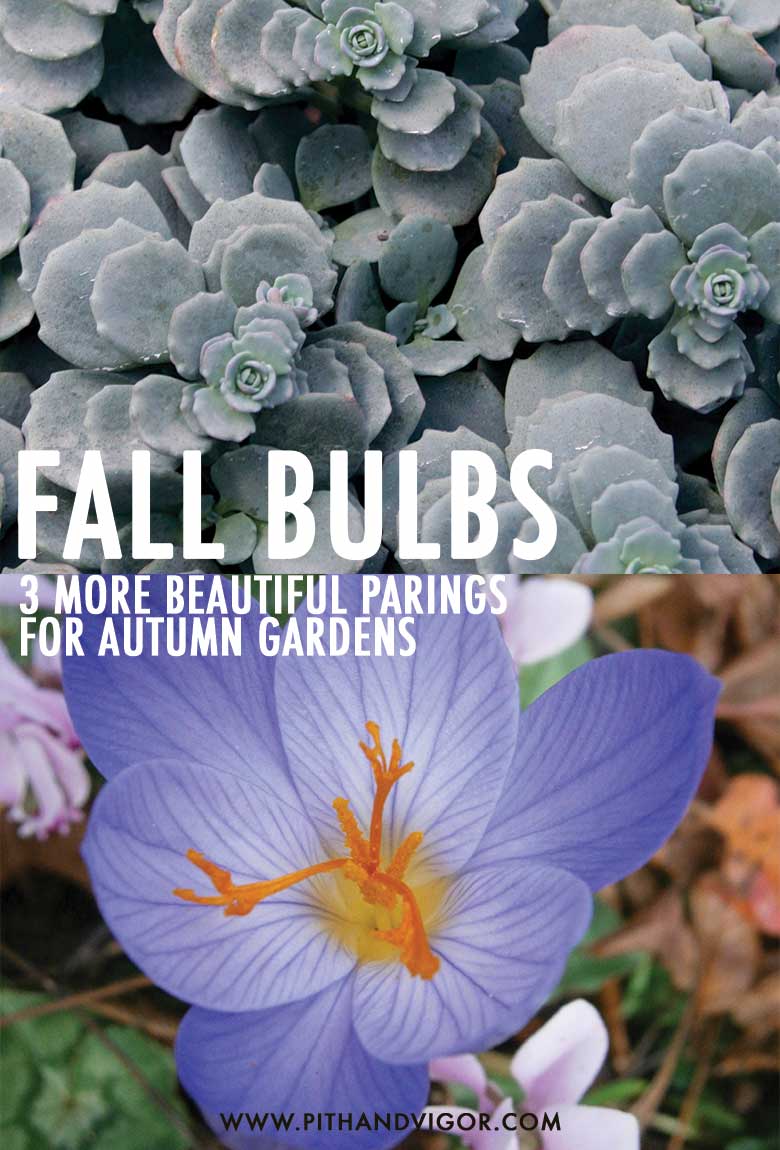
4) Pairings for Fall-Blooming Crocus speciosus – True Crocus
Crocus speciosus is indeed a relative of the common spring crocus (you know, the one that looks great until the squirrels eat the flowers), with both flowers and foliage similar in appearance.
Most autumn crocuses come from Mediterranean climates and are only hardy in Zones 7–9, but those from the European continent can survive in Zone 5.
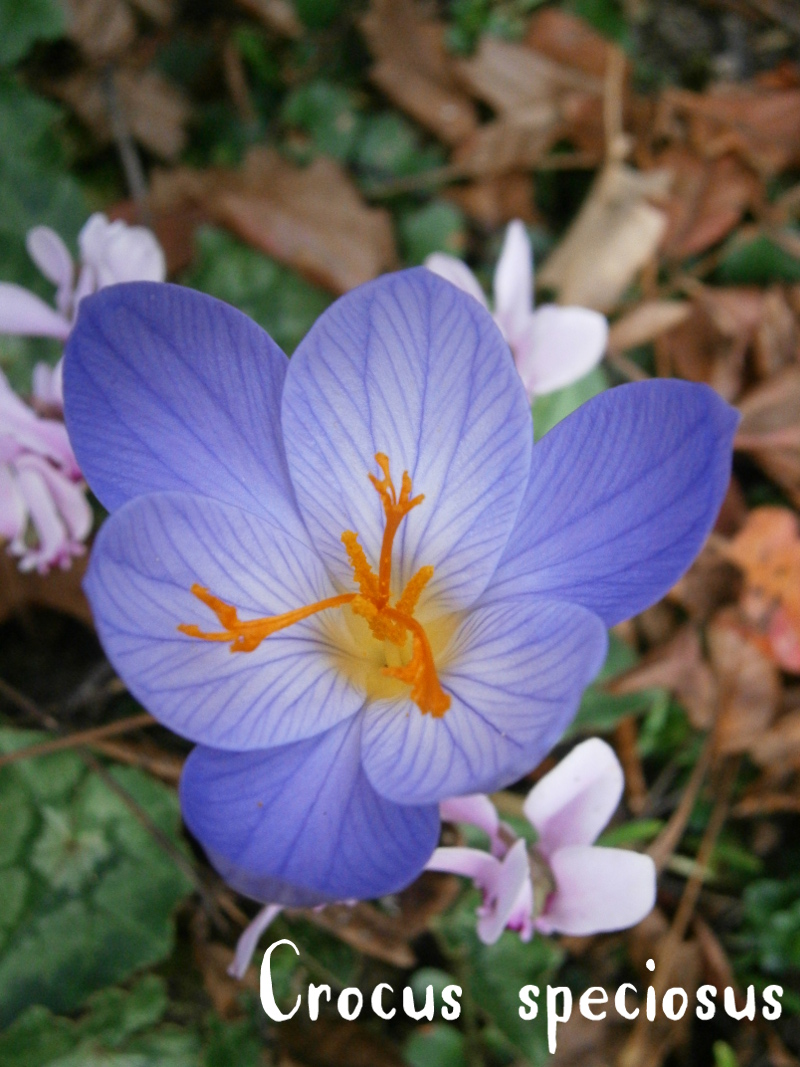
Other Varieties of Autumn Flowering Crocus bulbs
The most widely available is Crocus speciosus (very large violet flowers; there is also a white form). Also Zone 5-hardy are Crocus nudiflorus (very large violet, tolerates moist soil and naturalizes in thin grass), Crocus kotchyanus (purple with a gold throat), and the pale lilac Crocus pulchellus (October bloom with spring foliage; a white-flowered form is Crocus ‘Michael Hoog’).
If you garden in Zone 6, try Crocus goulimyi (lilac-blue, fragrant) and Crocus laevigatus ‘Fontenayi’ (white brushed with lilac, early winter).
Two pure white-flowered varieties are Crocus hadriaticus “Annabelle” and Crocus niveus.
Also hardy in Zone 6 are the saffron crocus, Crocus sativus (purple-striped blooms), and Crocus cartwrightianus, whose stamens can also be used as saffron. If you love the taste of saffron and have cooked with it – you know that you only need a few saffron stamens of Crocus sativus to transform a dish.
Hardy to Zone 4 is Crocus banaticus (the so-called “iris-flowered crocus”), which tolerates damp soils and has very broad leaves that appear in spring rather than fall (lilac to purple).
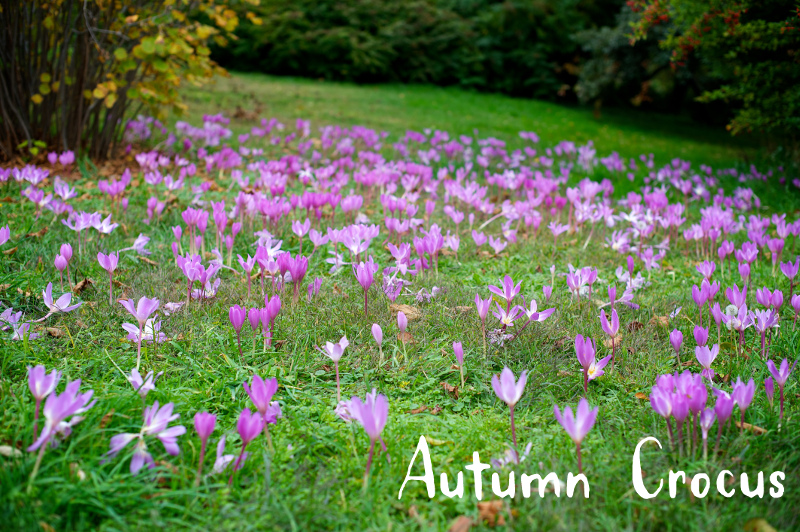
How to plant Autumn Crocus
Since most crocus flowers only open in the sun (exceptions being Crocus banaticus and Crocus pulchellus), select a site with good sun exposure.
Plant bulbs in late August or early September about 3 inches deep in humus-rich soil that is well-drained.
By planting among low groundcovers such as Sedum cauticola, you will eliminate the damage caused by mud splashing onto the blossoms from fall rains.
They are also a fantastic surprise if planted in lawns and allowed to naturalize. Be sure not to mow the foliage. It must persist until dieback to allow the bulb to complete its life cycle. Later-blooming varieties such as Crocus goulimyi, Crocus laevigatus ‘Fontenayi’, and Crocus niveus are best for this use.
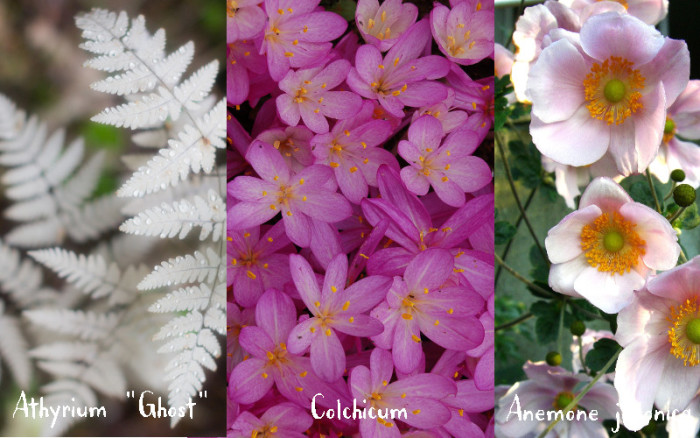
5) Pairings for Colchicum (USDA Zone 4/5-9)
Colchicum is commonly called the “autumn crocus,” this is actually not a crocus at all as its flowers have six stamens, while the true crocus’ has three.
Botanically, the crocus belongs to the Iris family (Iridaceae), while colchicum is a member of the lily family (Liliaceae).
Another important difference is foliage. The true crocus’ is fine and grassy. Colchicum’s is more like hosta leaves but which tend to dieback badly in June (turning yellow and being prone to snails and slugs).
Plant late-appearing perennials like Platycodon (balloon-flower) in front of them to camouflage.
Wonderful bulbs that bloom in fall companions for colchicum are tricyrtis hirta (toad lily) and the fall-blooming Anemone japonica, as well as ferns such as Athyrium “Ghost.”
Each corm produces four to six flowers ranging from 4-12 inches high with the exception of the Zone 6 Colchicum. “Violet Queen,” all are hardy into Zone 5 (Zone 4 with protection).
Other Varieties of Autumn Flowering Colchicum bulbs
The first to bloom is colchicum autumnale (1–2 inch lilac-pink flowers). There is a double form, colchicum autumnale “Pleniflorum”, a white form, “Album” and a double white, “Alboplenum”.
A bit later is the much larger-flowered colchicum speciosum (3 inch raspberry-tinged purple-pink), which also has a white cultivar, colchicum speciosum “Album”.
Other colchicum speciosum cultivars worth growing are “The Giant” (10–12 inch high rosy-lilac flowers with a white center) and “Waterlily”. (6-8 inches pinkish-purple to mauve, and it looks like—what else—a water-lily).
Colchicum should be planted in late summer in any well-drained, moisture-retentive soil in sun to partial shade. It is important to plant as soon as possible after receiving your plants. The shoulder of the corm—where it begins to broaden—should be set at soil level. All parts of colchicum are poisonous to critters that may be tempted to eat them.
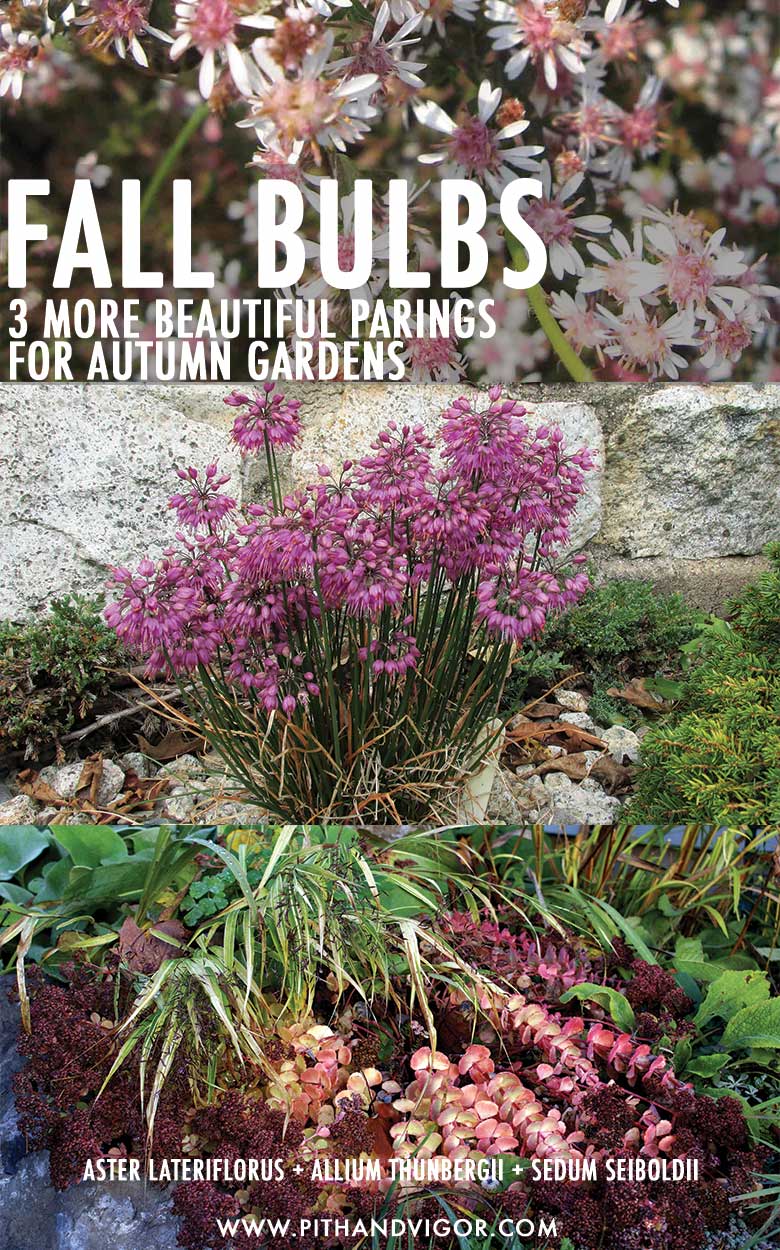
6) Bulbs that bloom in Fall: Allium thunbergii
Sharing the amaryllis family with sternbergia and lycoris is Allium thunbergii, an ornamental onion from Japan. The select cultivar “Ozawa” reaches a maximum height of 10 inches, perfect for a rock garden setting.
From September into October, 1-2 inch heads of bright violet flowers top the attractive, narrow, thread-like foliage. Allium thunbergii flowers are impervious to frost and snow.
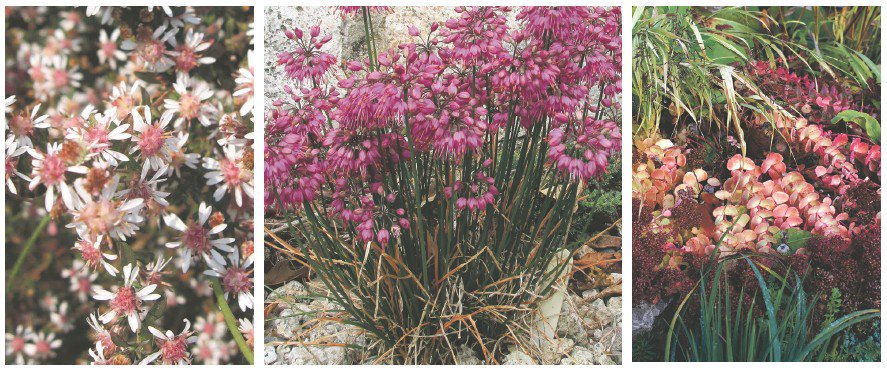
In later fall, the leaves will turn tawny orange, which is striking in a mass planting.
I love it with Aster lateriflorus “Lady in Black” as a background. The dark foliage of the aster, with its cloud of tiny white flowers, is a perfect foil for the star-like blooms of the allium. Another good companion to add to this tableau is the October Daphne stonecrop – Sedum sieboldii.
Suitable for full sun to partial shade, this allium is another low-maintenance beauty, requiring only average well-drained soil. The bulbs will rot in damp conditions.
7) For True Bulbophiles: Bulbs that bloom in Fall – Two More Challenging Selections
A bit more tender, expensive, difficult to grow, or hard to find, these autumn bloomer bulbs are worth the challenge. Try planting in containers (and bringing them into a protected garage or basement) if they are beyond your zone.
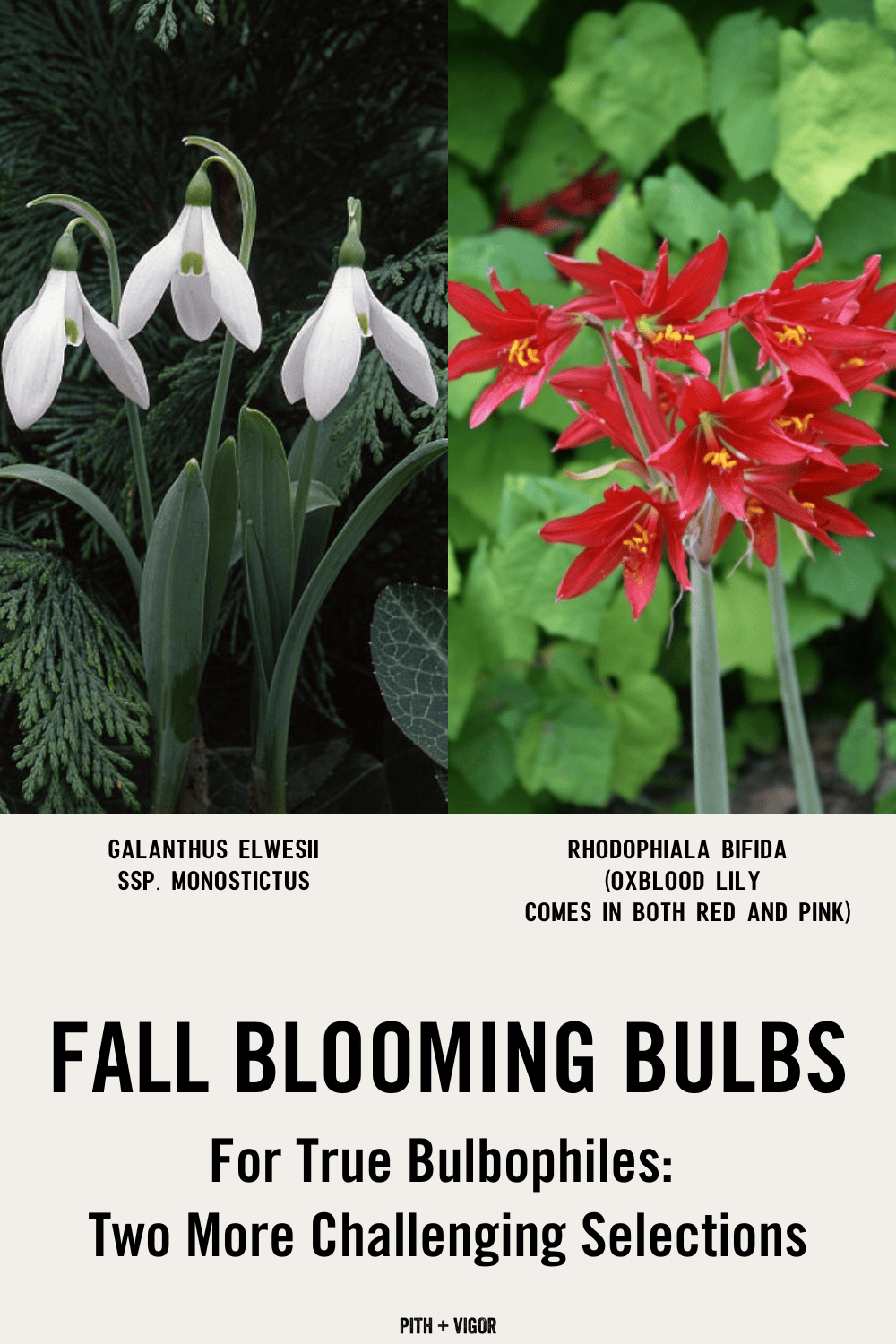
Galanthus elwesii ssp.monostictus
At 6″ inches tall, this Galanthus elwesii ssp.monostictus snowdrop is native to Turkey. It blooms in November and December when leaves emerge with flowers. Full sun to partial shade (USDA Zone 6).
Rhodophiala bifida (Oxblood Lily – Comes in both Red and Pink )
Rhodophiala bifida is a tall (15-inch) amaryllis relative from Uruguay and Argentina. Oxblood lily blooms in late summer-early fall on leafless stems; foliage appears after bloom. Prefer alkaline soils. Full sun (USDA Zone 7).
Autumn flowering Bulbs Plant Finder
Most of these bulbs can be found at Odyssey Bulbs. Additionally, check Plant Delights.
Story by Joanne Neale
Related Posts:
Image credits: Nova (CC by 3.0). TANAKA Juuyoh (CC by 2.0). Steven Severinghaus (CC by-NC-SA 2.0). jam343 (CC by 2.0), Sten Porse (CC by 3.0), Courtesy of Proven Winners, Ivo M. Vermeulen, Courtesy of New York Botanic Garden, Secundum naturam by Public Domain, peganum (CC by-SA 2.0). Proven Winners, IamNotUnique by CC plant delights, Tim Waters by CC, germana by cc, benjamin golub, Meneerke bloem by CC. pris.sears (CC by-NC-SA 2.0), Todd Boland With Permission, jacki-dee (CC by-NC-SA 2.0), Tim Waters
Share this Post:
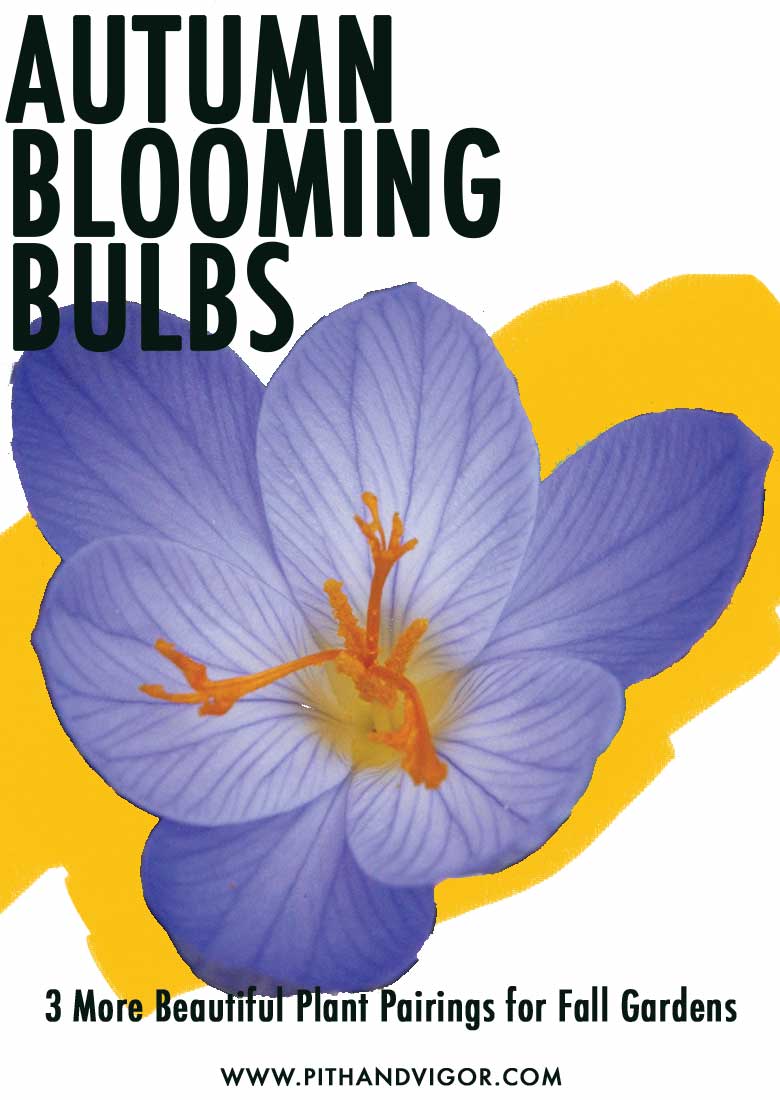
test